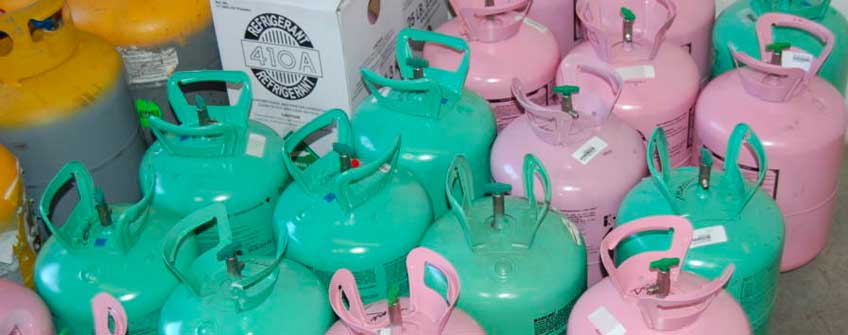
Constant innovation drives the HVAC industry, and Specific Systems® works to improve the products we provide to the industrial and process industries. We take great pride in ensuring that our products exceed both regulations and your expectations. In a concerted effort to be environmentally friendly, manufacturers of HVAC equipment are turning to new refrigerants. For most, this meant a move to the higher pressure, more efficient R-410a refrigerant.
R-410a, an HFC (hydrofluorocarbon), represents the new industry standard in commercial and residential refrigerants, and is substantially more efficient than older, out-dated HCFC refrigerants. New technology breeds other new technologies, and the compressors for R-410a are smaller and more efficient than their R-22 counterparts. Additionally, we are working to provide other lighter components to take even better advantage of R-410a’s capabilities.
R-410a requires a higher pressure to operate. In comparison to R-22, these pressures are much higher on both the high and low side of the circuit. For the product manufacturer, this means ensuring that all refrigerant lines are capable of withstanding much higher pressures.
Along with the higher pressure come greater efficiencies, as R-410a has greater thermodynamic capabilities than R-22. Essentially, the blend of HFC-35 and HFC-120 that comprises R-410a is better able to transfer heat than other refrigerants.
There are some applications where R-410a is outperformed by other HFC refrigerants, particularly in very high and very low ambient conditions. In some cases, end users have standardized on a refrigerant for their facility and require its use on all new equipment purchased.
One thing to keep in mind is the heat transfer capabilities of these optional refrigerants in comparison to R-410a:
- R-134a requires a substantially larger set of coils to meet the heat transfer of R-410a. In fact, it is approximately 33% less efficient than R-410a. Therefore, we must oversize the cabinet to meet required capacities. In other words, if your application requires 10 tons of cooling, we will need to look at providing a 15-ton cabinet to meet the capacity requirements.
- While not nearly the drastic difference of R-134a, R-407c also requires derating the unit, but only by approximately 5%. This does not generally require an increase of cabinet size. Further, R-407c is very similar in heat transfer characteristics to the obsolete R-22, and both types of systems often utilize the same components throughout the refrigeration circuit.
Please contact us with any questions you regarding refrigerant choices or any other options.


